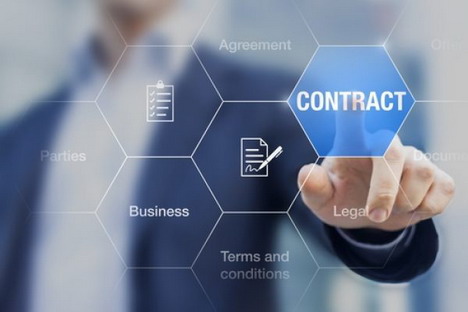
No matter the size of your business, having continual cash flow throughout your operations is essential for ongoing success. But when you rely on clients or customers to pay you on time, you may run into situations where you need cash before that payment date arrives.
The good news is that different funding options are available to business owners that let you fill in those gaps between invoices being sent and payment being received. One of those is known as invoice factoring.
What is invoice factoring?
Invoice factoring, or accounts receivable factoring, is where businesses sell the value of their outstanding invoices to a third-party financing company at a discounted rate. The factoring company then pays the business owner a fixed percentage of the total owed amount upfront, with the remainder of the balance collected from customers later.
Most businesses will know if they’re in a position to need invoice factoring by looking at data in their invoice management software to see what customers still owe money and the amounts of any outstanding payments.
While some businesses can continue to operate regularly while waiting for invoices to be paid, others may struggle if their standard payment terms are more than 30 days. This can be particularly problematic during slower seasons, where previous months’ invoices may not cover the day-to-day business costs.
Invoice factoring vs. invoice financing
Both invoice factoring and invoice financing are types of accounts receivable financing, but understanding the differences is important. With invoice factoring, businesses sell the outstanding balances of their open invoice to a third-party company to receive a cash lump sum immediately.
Invoice financing, though, doesn’t involve selling any balances. Instead, the financing company uses the open invoices as collateral and allows the business to borrow money from them as a lender.
How does invoice factoring work?
Three groups of people are involved in the invoice factoring process — the business, their customers, and the factoring company. Once an application for factoring has been made, the financing company will review the business’s credit history and determine if they’re eligible. If they are, a standard invoice factoring process will follow:
Step 1: Invoices submitted to factoring company
As soon as the invoice has been sent to the customer, a copy is also sent from the business to the factoring company. When all invoices have been received and approved, the factoring company can process them.
Step 2: Credit amount provided to business
Any approved invoices will result in the business receiving between 70% and 90% of the total invoice amount in a cash lump sum. This money can then be used for ongoing business operations until the remainder of the invoice has been paid by the customer.
Step 3: Factoring company collects 100% from customers
As the factoring company has issued the payment to the business, it then becomes their responsibility to follow up with the customer to receive the full amount.
Step 4: Business receives final percentage minus fees
When the customer has paid the full invoice amount to the factoring company, the remainder of the owed payment is released to the business. Depending on how much was given upfront, this could be anywhere from 10% to 30% of the total invoice amount. There will be a small deduction for the factoring company’s fees, but the business owner will receive anything remaining outside of this.
Example of invoice factoring
The amount provided to the business as a cash lump sum will depend on the business’s credit history and the terms provided by the factoring company. For instance, an open invoice of $20,000 with a factor fee of 5% and an initial advance of 80% would look like this:
|
Item |
Calculation |
Amount |
|
a. Invoice value |
– |
$20,000 |
|
b. Factor fee (5%) |
5% of a |
$1,000 |
|
c. Invoice value after fee/business to receive |
a – b |
$19,000 |
|
Initial advance (80%) |
80% of c |
$15,200 |
|
e. Remaining balance due to business |
c – d |
$3,800 |
In this example, the invoice would be sold to the factoring company for a face value of $20,000, minus the 5% fee for the service. Although the business will lose $1,000 of what they would have received without using invoice factoring, the benefit of working this way is that they’ll receive $15,200 straight away, without having to wait for the customer to pay.
Once the customer pays the full $20,000 to the factoring company, the business will receive the remaining $3,800.
Types of invoice factoring
A business can use two main types of invoice factoring: recourse factoring and non-recourse factoring.
- Recourse factoring. If a customer fails to make payments on their invoice, the business is required to buy the invoice back from the factoring company. Some will allow businesses to simply replace the unpaid invoice with another of the same or greater value, while others may not.
- Non-recourse factoring. If a customer doesn’t pay their invoice, there is no financial burden on the business under this type of factoring agreement as the factoring company has assumed that risk upfront. As there is more risk involved here, fees for non-recourse factoring are typically higher.
Benefits of invoice factoring
For business owners looking to avoid taking out a loan to cover the costs of new inventory, expanding operations, or even paying staff, invoice factoring can be a good alternative.
Improved cash flow
With invoice factoring, you no longer have to wait and see when a customer might pay their invoice at any point in the payment terms window. If you have especially long payment terms, like 60 or 90 days, invoice factoring can give you a more predictable and reliable cash flow into the business.
This makes business planning and forecasting much easier, as you’ll know exactly when you’ll be receiving your money and how much you’ll have upfront. When running a growing business, invoice factoring can ensure stability in your finances that allows you to hire more staff, buy new inventory, or upgrade machinery straight away.
Greater flexibility for clients
As your business doesn’t need cash from client invoices being paid straight away, this gives you the opportunity to be more flexible with the payment terms that you’re holding your customers to. Not only can this be beneficial for your clients in terms of their own business finances, but it can also lead to great loyalty and satisfaction due to your flexibility in payment.
No collateral required
Invoices are considered an asset to the business, even when they’re still unpaid. This means that no additional collateral like inventory or real estate assets are required to guarantee your financing.
However, it’s important to note that recourse invoice factoring does require a personal guarantee from the business owner that, should the customer not pay their invoice, the business will buy it back from the financing company.
Easier to qualify than a loan
As the financial burden of factoring is on the customer rather than the business, this system can be ideal for businesses with low or no credit to receive a cash injection immediately without having to take out a business loan (which they likely wouldn’t be approved for).
In many cases, the fees associated with invoice factoring are also much lower than a loan. The speed at which this arrangement can be made, along with these reduced costs, can make invoice factoring a much better solution for short-term debt management and funding needs.
Factor in all your costs
Having the money you need to keep your business running is all about speed and flexibility. With invoice factoring, you can receive the funds you need to help your company stay afloat, without worrying about the headaches that come with traditional business financing. For growing businesses, invoice factoring could be just what you need to succeed.
Create, send, and manage your customer invoices with billing software that improves accuracy and speed when it comes to getting paid.





